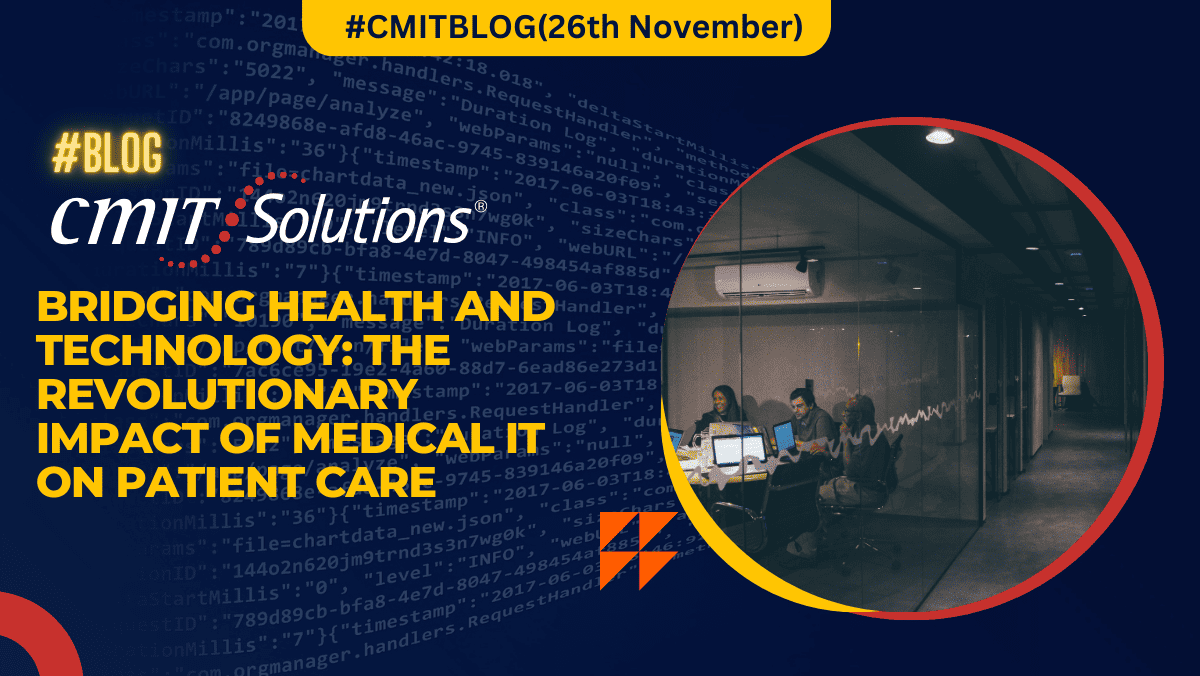Introduction
In the dynamic intersection of healthcare and information technology (IT), innovations are shaping the future of patient care. The marriage of medical expertise with cutting-edge IT solutions is unlocking unprecedented possibilities in diagnostics, treatment, and overall healthcare delivery. In this blog post, we will explore the transformative impact of Medical IT on the medical industry, examining key advancements, benefits, and the evolving landscape of patient-centered healthcare.
1. Electronic Health Records (EHRs) – A Digital Revolution
Electronic Health Records (EHRs) have revolutionized the way medical information is recorded, stored, and shared. The transition from paper records to digital platforms enhances the accessibility of patient data, allowing healthcare providers to make informed decisions quickly and accurately.
2. Telemedicine and Remote Patient Monitoring
The rise of telemedicine has been a game-changer, especially in the context of global events that have accelerated the adoption of remote healthcare. Medical IT facilitates virtual consultations and remote patient monitoring, enabling healthcare professionals to connect with patients, monitor vital signs, and manage chronic conditions from a distance.
3. Predictive Analytics for Early Intervention
The integration of predictive analytics in medical IT allows healthcare providers to identify potential health risks and predict disease outcomes. Early intervention becomes possible as analytics models analyze patient data, genetic information, and environmental factors to identify patterns that may indicate the likelihood of certain conditions.
4. Precision Medicine – Tailoring Treatments to Individuals
Medical IT plays a pivotal role in the era of precision medicine. By analyzing vast datasets, including genetic information, treatment plans can be tailored to the individual characteristics of patients. This personalized approach improves treatment efficacy and reduces adverse effects.
5. Artificial Intelligence (AI) in Medical Imaging
AI has made significant strides in medical imaging, aiding in the interpretation of complex images such as MRIs and CT scans. Machine learning algorithms can detect abnormalities with high accuracy, providing clinicians with valuable insights for diagnosis and treatment planning.
6. IoT Devices and Wearables for Real-Time Monitoring
The Internet of Things (IoT) has extended into healthcare through the development of connected devices and wearables. These devices monitor vital signs, activity levels, and other health metrics in real-time, offering a proactive approach to healthcare management and early detection of health issues.
7. Enhanced Patient Engagement and Education
Medical IT facilitates improved patient engagement through digital platforms that provide health information, appointment scheduling, and communication with healthcare providers. Education and awareness programs are also more accessible, empowering patients to actively participate in their healthcare journey.
8. Data Security and Patient Privacy
As medical information becomes digitized, the importance of robust data security and patient privacy measures cannot be overstated. Medical IT systems must adhere to stringent cybersecurity standards to protect sensitive patient data from unauthorized access and breaches.
Advantages of the Integration of Medical IT in the Healthcare Industry:
1. Efficient Data Management:
Electronic Health Records (EHRs) streamline data management, ensuring quick access to patient information, reducing errors, and improving overall healthcare efficiency.
2. Enhanced Patient Care:
Medical IT facilitates real-time monitoring, telemedicine, and personalized treatment plans, leading to improved patient outcomes, especially in chronic disease management.
3. Remote Healthcare Access:
Telemedicine enables patients to access healthcare remotely, promoting inclusivity, reducing travel burdens, and increasing healthcare accessibility, particularly in rural or underserved areas.
4. Early Intervention with Predictive Analytics:
Predictive analytics allows for early intervention and preventive measures, potentially reducing the severity and complications of certain health conditions.
5. Precision Medicine:
Tailoring treatments to individuals based on genetic and personalized health data improves treatment efficacy, minimizes side effects, and represents a significant advancement in patient care.
6. Improved Diagnostics with AI in Medical Imaging:
AI-driven medical imaging enhances diagnostic accuracy, speeds up interpretation, and assists healthcare professionals in making more informed decisions.
7. IoT Devices for Proactive Healthcare:
IoT devices and wearables enable real-time monitoring of vital signs, allowing for proactive healthcare management and early detection of potential health issues.
8. Patient Engagement and Education:
Digital platforms and medical apps enhance patient engagement, providing educational resources, appointment scheduling, and communication tools, fostering a more informed and empowered patient population.
9. Data Security and Privacy Measures:
Rigorous data security measures protect patient privacy, ensuring that sensitive medical information is safeguarded against unauthorized access and cyber threats.
Disadvantages and Challenges:
1. Data Security Risks:
The digitization of healthcare data poses cybersecurity challenges, including the risk of data breaches, unauthorized access, and potential exposure of sensitive patient information.
2. Integration Complexity:
Integrating various medical IT systems into existing healthcare infrastructure can be complex and may require significant investments in time, resources, and training.
3. Ethical Dilemmas:
The use of patient data for research, especially without explicit consent, raises ethical concerns regarding privacy, data ownership, and potential misuse of sensitive information.
4. Data Accuracy and Quality Concerns:
Inaccurate or incomplete data in medical IT systems can lead to incorrect diagnoses, treatment decisions, and compromise the quality of patient care.
5. Skills Gap:
There may be a skills gap in the healthcare workforce concerning the understanding and utilization of advanced medical IT systems and technologies.
6. Regulatory Compliance:
Adhering to healthcare regulations and data protection laws, such as HIPAA, poses challenges, and non-compliance may result in legal and financial consequences.
7. Patient Resistance to Technology:
Some patients may resist or be uncomfortable with the adoption of medical IT, potentially leading to challenges in engagement and adherence to digital healthcare solutions.
Conclusion
The synergy between medical expertise and information technology is redefining the landscape of patient care. Medical IT advancements, from EHRs and telemedicine to AI-driven diagnostics, are enhancing the efficiency, accuracy, and accessibility of healthcare services. As the Medical IT industry continues to evolve, it holds the promise of not only improving patient outcomes but also transforming the healthcare experience into one that is more personalized, connected, and patient-centric. The journey towards a healthier future is being paved by the remarkable innovations at the intersection of medicine and information technology.





